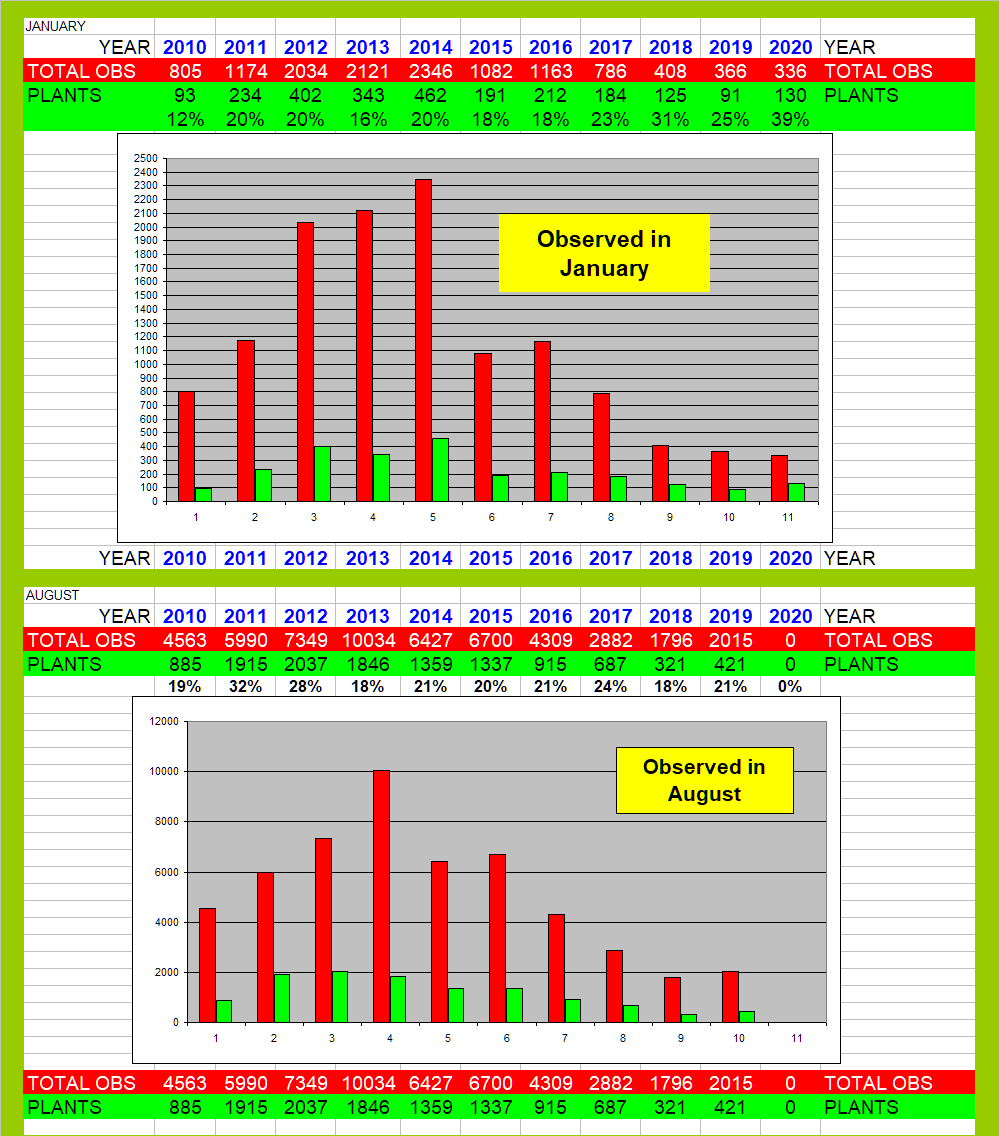I’ve been revising my report scripts, and I find that the number of taxa recorded per month, in descending order, is August, July, June, May, September, October, April, November, March, January, December and February, with nearly 3 times as many taxa recorded in August as in February.
There are factors involved beyond the raw number of taxa identifiable in the relevant months.
- longer daylight hours in the summer gives more time for recording
- more settled weather in an average summer gives more recording days
- the late autumn shift to GMT gives a recording time advantage to September and October over March
- there is a bias towards recording taxa earlier in the year, in that if a taxon is recorded at a site earlier in the year it won’t go in my records for a latter visit to the site in the same year, but recording over multiple years and sites will mostly cancel that out; it may however be why January has more taxa recorded than February and December.
- my transcription backlog is biased towards the summer months.
The number of records per month shows a different pattern - the order is May, June, July, August, September, April, October, November, March, February, January, December. This presumably reflects the bias towards recording earlier in the year, but with less to be seen before May.
Results for the year 2019 look somewhat different - July, August, September, June, April, May, March, October, February, December, November, January. Factors involved here include bulb hunting during February to April, a wet autumn and winter depressing October to November recording,

